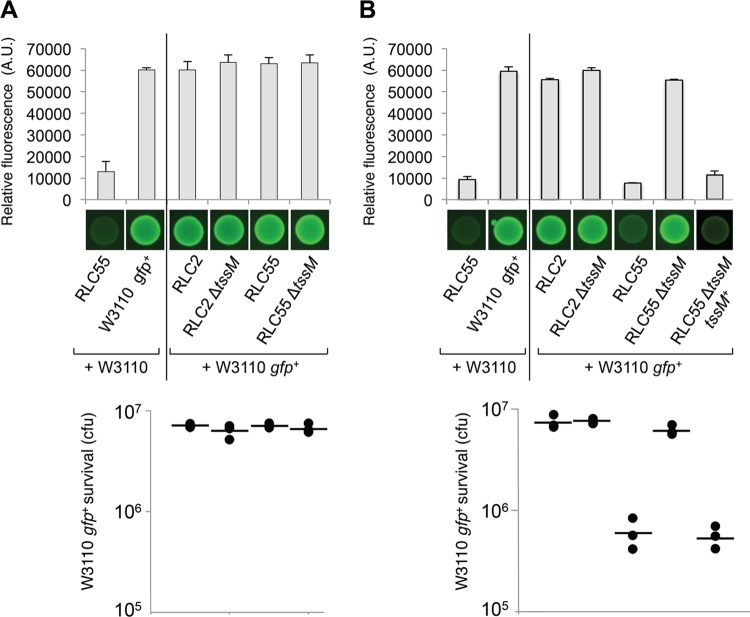Fig 4.
The CTS1 T6SS confers a growth advantage on C. rodentium. A growth competition assay was conducted using a fluorescent E. coli strain as prey (W3110 gfp+) and different strains of C. rodentium (RLC2, the engineered RLC55, its ΔtssM1 derivative, and the complemented ΔtssM1 strain [tssM1+]) as predators. C. rodentium cells were mixed with GFP+ E. coli W3110 cells, spotted onto LB agar supplemented (B) or not (A) with IPTG (500 μM) and arabinose (2%), and incubated for 14 h at 30°C. As controls, W3110 gfp+ and RLC55 cells were mixed with nonfluorescent W3110 E. coli cells. The relative fluorescence (upper graph) is expressed in arbitrary units (A.U.) and is the mean of fluorescence levels obtained from three independent experiments (each measured in triplicate). Fluorescent images of the competition assays (obtained with a LI-COR Odyssey imager) are shown below the upper graph. The number of recovered E. coli cells (survival expressed in CFU) is indicated in the lower graph (the closed circles indicate values from three independent assays, and the average is indicated by the bar).

